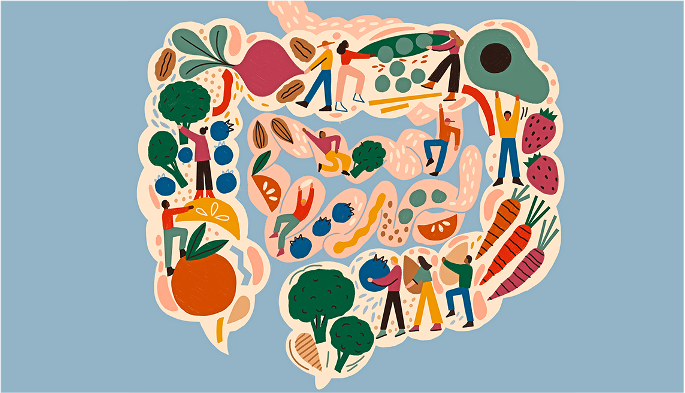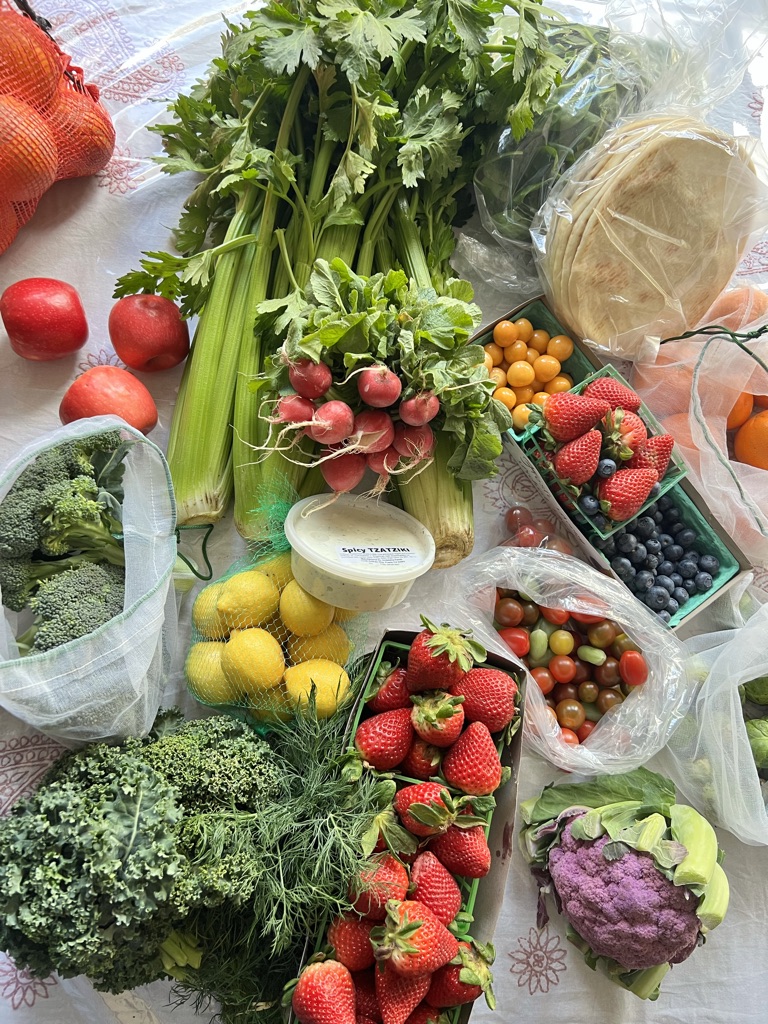Your body is full of trillions of bacteria, viruses, and fungi. They are collectively known as the microbiome. While some bacteria are associated with disease, others are significant for your immune system, heart, weight, and many other aspects of health.
Most of the microbes in your intestines are found in a “pocket” of your large intestine called the cecum, and they are referred to as the gut microbiome.
Although many different types of microbes live inside you, bacteria are the most studied.
There are more bacterial cells in your body than human cells. Your body has roughly 40 trillion bacterial cells and only 30 trillion human cells. That means you are more bacteria than humans. More research links Gut health with mental health, weight management, inflammation, how food is digested in individuals, health health, and blood sugar management. This is blog will help you provide a list of foods to eat and foods to avoid for good gut health.
Foods to eat for Healthy Gut
- High Fiber diet: A new study by researchers at Stanford University shows that a fermented-food diet may increase microbiome diversity and decrease markers of inflammation. In the same study, a high-fiber diet shows the potential to alter gut microbiome functions and modulate immune responses. Women should eat 25 grams of fiber daily, and men should consume 38 grams daily.
- Eat whole grains: whole grains can promote the growth of Bifidobacteria, lactobacilli, and Bacteroidetes in humans. Make half of your grains as whole grains.
- Polyphenols: Polyphenols are plant compounds with many health benefits, including reductions in blood pressure, inflammation, cholesterol levels, and oxidative stress. Human cells can’t always digest polyphenols. Because they aren’t absorbed efficiently, most polyphenols go to the colon, where gut bacteria digest them. Some foods rich in polyphenols are cocoa and dark chocolate, red wine, grape skins, green tea, Almonds, Onions, blueberries, and broccoli. Polyphenols from cocoa can increase the amount of Bifidobacteria and lactobacilli in humans and reduce the quantity of Clostridia. Furthermore, these changes in the microbiome are associated with lower levels of triglycerides and C-reactive protein, which is a marker of inflammation. The polyphenols in red wine have similar effects and have even been shown to increase levels of beneficial bacteria in people with metabolic syndrome.
- Fermented foods: A recent prospective, randomized multi-omics study showed a diet rich in fermented foods or high levels of plant-based fiber may shape immune status and gut microbiome function in healthy adults. Six servings a day of fermented foods—including yogurt, sauerkraut, kefir, kombucha, and kimchi—led to increased gut microbiome diversity, altered microbiome composition, and decreased levels of inflammation markers.
- Prebiotics are foods that promote the growth of beneficial bacteria in the Gut. They are mainly fiber or complex carbs that human cells cannot digest. Instead, certain species of bacteria in the Gut break them down and use them for fuel. Many fruits, vegetables, and whole grains contain prebiotics, but they can also be found independently. Many studies have shown that prebiotics can promote the growth of several beneficial bacteria, including Bifidobacteria . Specific prebiotics has also been shown to reduce insulin, triglyceride, and cholesterol levels in people with obesity, which could help prevent conditions like heart disease and type 2 diabetes.
- Probiotics: Probiotics are live bacteria that help keep your digestive system healthy. The colony of microorganisms in the body is essential in maintaining physiological processes, most notably the conversion of food to critical nutrients and the transport of nutrients in the body. Taking probiotics before consulting a healthcare professional is not a good idea. They can help you decide whether a probiotic supplement is appropriate and give brand and dosage recommendations.
Foods to avoid or eat in a limited amount for Gut Health
- Artificial Sweeteners: High-intensity sweeteners are commonly used as sugar alternatives, often sweeter than sugar with minimal calories. Despite being “generally recognized as safe” by regulatory agencies, some animal studies have shown that these sugar substitutes may negatively affect the gut microbiota. Sucralose, aspartame, and saccharin have been shown to disrupt the balance and diversity of gut microbiota.
- Food additives: Emulsifiers, which are ubiquitous in processed foods, have also been shown to affect the gut microbiota in animals.
- Red Meat: L-carnitine, a compound found in red meat, interacts with gut bacteria to produce trimethylamine-N-oxide (TMAO), according to a 2022 study from the Cleveland Clinic and Tufts University. The study, published in the American Heart Association’s journal, Arteriosclerosis, Thrombosis, & Vascular Biology, shows how TMAO is associated with atherosclerosis—a plaque buildup in the arteries. This indicates that the link between red meat and heart disease is not just about saturated fat and sodium: How gut bacteria interact with red meat may play a role. Eat red meat in moderation, and choose fatty fish, white fish, chicken or plant-based proteins like tofu and tempeh regularly.
- Processed and Refined Foods: “While I wouldn’t go as far as to say you need to cut certain foods out of your diet forever—food is about enjoyment too, after all—limiting highly processed foods loaded with additives and salt will do you and your gut microbes good,” says Rossi. It’s hard to study “processed foods” as a whole because each food has different ingredients. Still, the biggest issue with processed and refined foods is that they lack diversity and fiber and are often filled with added sugars, salt, artificial sweeteners, and/or additives and preservatives. Your microbiome thrives on the diverse fibers and polyphenols from eating various colorful fruits, vegetables, and whole grains.
- Alcohol: Research studies, like the 2022 review published in Frontiers in Cellular and Infection Microbiology, have found that alcoholism negatively impacts the intestinal microbiome. And while research is scant on the effects of moderate alcohol consumption on gut bacteria, one 2021 study published in Frontiers in Cardiovascular Medicine suggests that moderate alcohol intake positively influences both the gut microbiome and cardiovascular disease. If you enjoy drinking, do so in moderation: one drink per day for females and two for males.
Reference adopted from Healthline Accessed March 13, 2023


